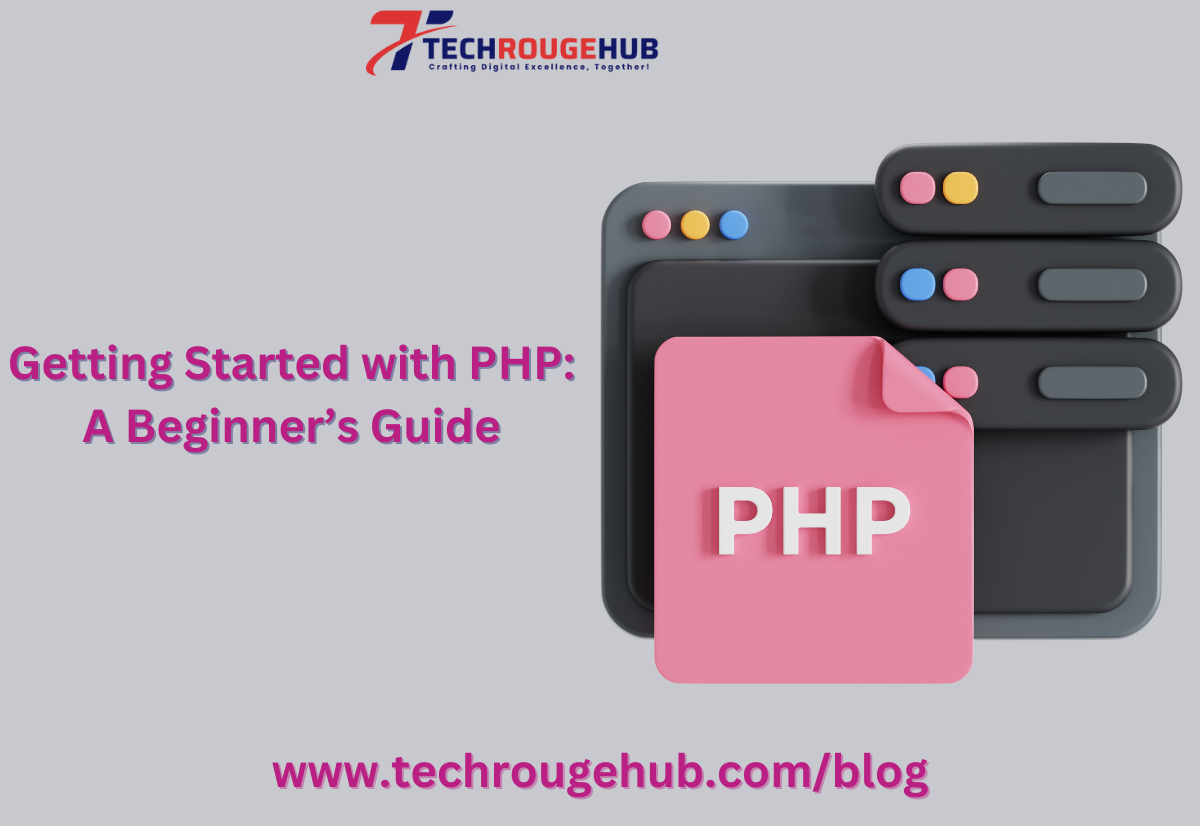Getting Started with PHP: A Beginner’s Guide
PHP (Hypertext Preprocessor) is a popular server-side scripting language used for web development. It powers millions of websites, including platforms like WordPress, Facebook, and Wikipedia. If you’re new to PHP, this guide will walk you through the basics to help you get started with this powerful language.
What is PHP?
PHP is an open-source scripting language primarily used for web development. It allows developers to create dynamic and interactive websites by processing code on the server before sending the final output to the user’s browser. PHP is widely known for its ease of use, flexibility, and strong community support.
Why Use PHP?
- Easy to Learn: PHP syntax is simple and beginner-friendly.
- Cross-Platform: Works on Windows, macOS, and Linux.
- Database Integration: Seamlessly integrates with MySQL and other databases.
- Open Source: Free to use with a large community for support.
- Versatile: Can handle forms, sessions, cookies, and more.
Setting Up PHP
Before writing PHP code, you need to set up a development environment. Here’s how:
1. Install a Local Server
Since PHP runs on a server, you need a local server environment for development. You can use:
- XAMPP (Windows, macOS, Linux)
- WAMP (Windows only)
- MAMP (macOS and Windows)
- LAMP (Linux only)
2. Write Your First PHP Script
Once you have your server set up, create a new file with a .php extension (e.g., index.php). Open the file and add the following code:
<?php
echo "Hello, World!";
?>Save the file in the htdocs or www directory of your local server and run it in your browser by navigating to http://localhost/index.php.
Basic PHP Syntax
Here are some fundamental PHP concepts:
1. Variables
Variables store data and are declared using the $ symbol.
$name = "John";
$age = 25;
echo "My name is $name and I am $age years old.";2. Data Types
PHP supports multiple data types, including:
- String (
"Hello World") - Integer (
25) - Float (
10.5) - Boolean (
trueorfalse) - Array (
["Apple", "Banana", "Orange"])
3. Conditional Statements
Use if, else, and elseif to handle conditions.
$score = 85;
if ($score >= 90) {
echo "Grade: A";
} elseif ($score >= 75) {
echo "Grade: B";
} else {
echo "Grade: C";
}4. Loops
Loops allow repetitive tasks.
for ($i = 1; $i <= 5; $i++) {
echo "Number: $i <br>";
}5. Functions
Functions help organize code efficiently.
function greet($name) {
return "Hello, $name!";
}
echo greet("Alice");Connecting PHP with MySQL
PHP can interact with databases like MySQL to store and retrieve data. Here’s a simple connection example:
$servername = "localhost";
$username = "root";
$password = "";
$database = "test_db";
$conn = new mysqli($servername, $username, $password, $database);
if ($conn->connect_error) {
die("Connection failed: " . $conn->connect_error);
}
echo "Connected successfully";Conclusion
PHP is a powerful language that makes web development easier and more dynamic. By mastering the basics covered in this guide, you are well on your way to building interactive web applications. Keep practicing, explore frameworks like Laravel, and experiment with real-world projects to strengthen your PHP skills.

